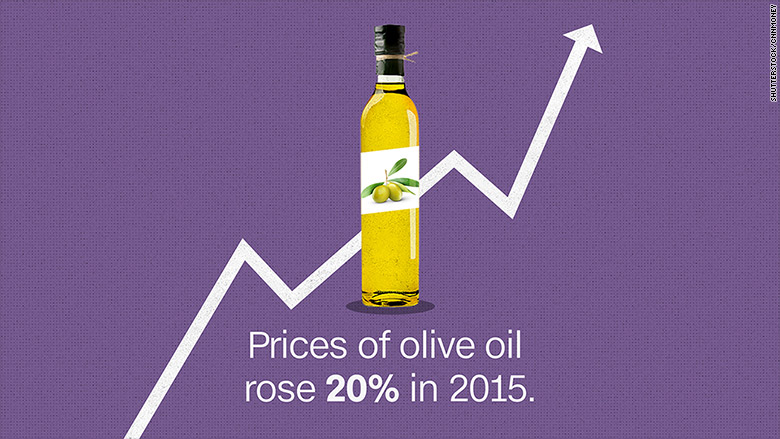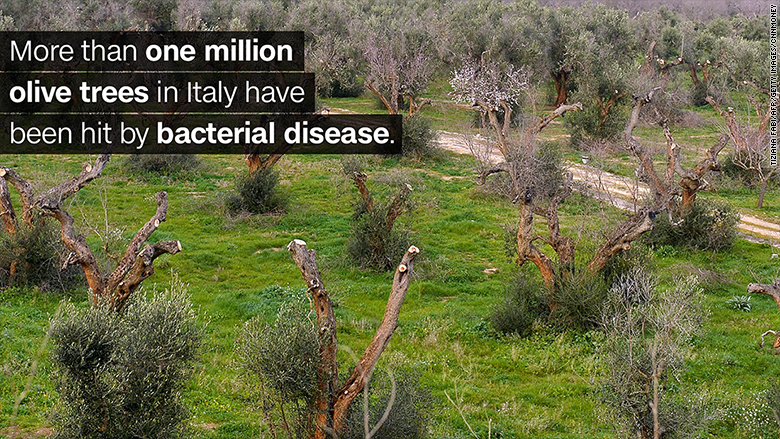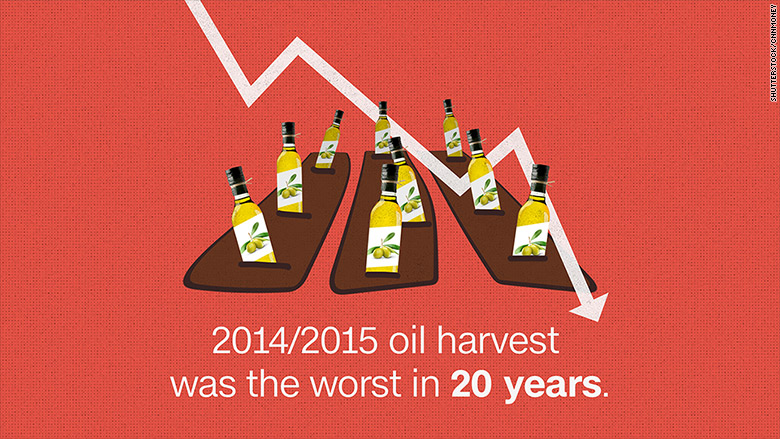
Your favorite Italian dressing is getting more expensive.
Olive oil prices spiked 20% in 2015, after drought and disease devastated a big part of Europe's olive crop, and industry experts are forecasting a similar increase this year.
Global production of the oil dropped by a third last year, data from the International Olive Council show.
Spain, which produces about 40% of the world's olive oil, experienced an unusually hot and dry summer in 2014. That led to the worst harvest in nearly 20 years, farmers say.
To meet export orders, Spanish producers ran down their reserves. But the 2015/2016 harvest is also turning out to be weak, again due to unusually hot summer weather. Three weeks of very high temperatures in July 2015 caused huge amounts of olives to mature too quickly.
The International Olive Council now expects Spain to produce 1.2 million tones of olive oil this year, better than last year's disastrous harvest, but still way below the 1.8 million tonnes the country typically produces.
And it's not just Spain. Millions of olive trees in Italy, which produces 20% of the world's olive oil, have been attacked by a deadly disease.
European officials have ordered a widespread cull in the worst affected areas of southern Italy, in an attempt to contain the outbreak. But Italy has halted some of the felling to save olive groves featuring trees over 500 years old. They said the EU was given "inaccurate information" about the outbreak.

Related: This farm in a box generates $15,000 a month
The higher prices are already prompting shoppers to switch to alternative oils. Global olive oil consumption dropped 7% in 2015, according to figures from the International Olive Council.
"Olive oil has always been very dependent on weather conditions, but the bacteria attack in Italy might change the game for a while, particularly for those countries where olives are a staple purchase," said Anne Lefranc, European marketing director at research firm IRI.

Olive oil has long been a staple of Mediterranean cuisine but it has become globally popular in recent years as consumers became more aware of its health benefits compared to other cooking oils.
Global consumption has almost doubled over the last 25 years, according to a report by the Italian farmers' group Coldiretti. Consumption in the U.S. alone increased by 250% in the last 25 years.
And while recent harvests in Europe have been exceptionally bad, one country's olive oil production is booming.
Tunisia saw a record harvest in 2014/2015, and it's now the world's second largest producer after Spain.
